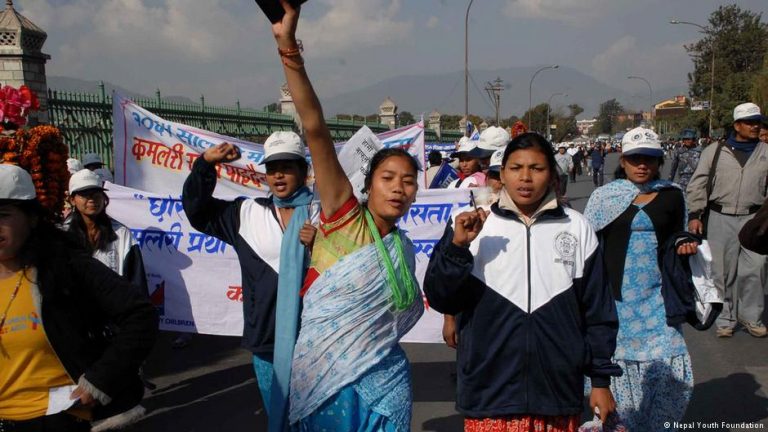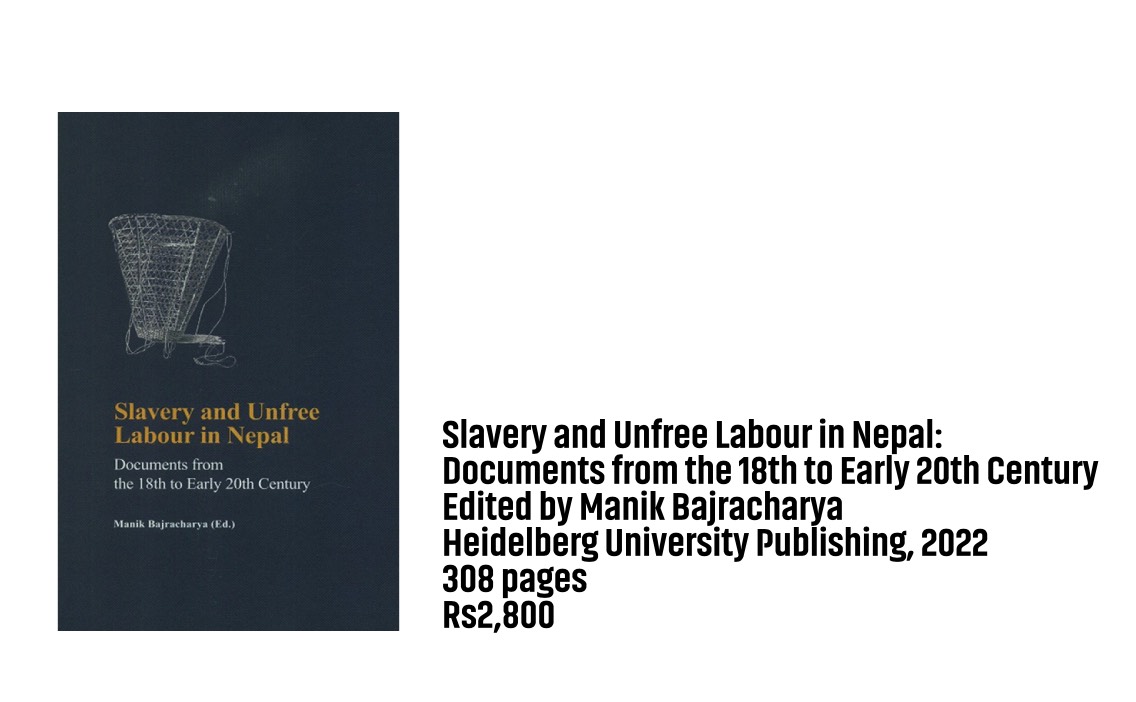Slavery and unfree labour
A long and torturous history of enslavement continues to shape human rights and gender discourse in NepalThe history of slavery is as old as human civilisation. One explanation was that slaves became necessary when there was an abundance of land, but lack of labour. It was profitable for landlords to use forced labour to increase production.
In the Subcontinent and Nepal slavery was linked to powerful land-owning classes and their power. People, usually from ‘lower’ castes in pre-modern Nepal did not own property, and paid off debts through inter-generational bonded labour. They were also subjugated to enslavement as a punishment for criminal offences.
A new book, Slavery and Unfree Labour in Nepal: Documents from the 18th to Early 20th Century, delves into this dark side of history using documents and manuscripts from pre-modern Nepal. Politics and the hierarchical caste system shaped slavery.
Edited by Manik Bajracharya, a researcher at the Heidelberg Academy of Sciences and Humanities, the book cites the example of a bondservant who was recaptured after two years, and his bondage renewed with a fine added to the principal. People of disadvantaged castes were forced to abide by the terms of their landlords.
Kamaiya and Kamlari were slave women under a bonded labour system prevalent in the western Tarai. Interestingly, if a Kamaiya woman gave birth to a child of her landlord master during the period of her servitude, the offspring would be considered a legitimate child and be eligible to property like any other children. The women would also be freed from slavery.
However, the prevailing laws allowed men to have sexual relations with slave women while also allowing their husbands to kill the partner. There were rules designed to exercise control over people of lower castes, defining the social order. The chain of dependency in a household, hierarchy in castes, and gender discrimination were all aggravated by slavery.
True, such a patriarchal mindset is still deeply entrenched in India and Nepal, but slavery took this discrimination to an extreme — beyond just exploitation of labour. The book contains several accounts of bondage and slavery including fines and actions following which a person became a slave.
The caste system overlaid slavery. Terms like ‘sacred thread wearing caste’, ‘non-enslavable alcohol drinking caste’, ‘enslavable alcohol drinking caste’, ‘water unacceptable but touchable’, ‘untouchable’ are frequently used in the book, indicating the labels and hierarchies at the time.
LAW VS PRACTICE
Prime Minister Chandra Shumsher Rana passed an edict abolishing slavery in 1924, although formally it was enacted only two years later. He said Hindu tenets condemned slavery, and asked slaveholders to release all slaves. The move was applauded by the international audience and the slaves themselves. But there were rumours that he had married a slave, which motivated his move to abolish the system. Regardless, slavery was done away with in Nepal.
A letter written by Chandra Shumsher to Hugh J Wilkinson, the first British envoy to Nepal, asks him to arrange funds for slave emancipation to pay off the slave owners. In subsequent correspondence, the two exchange names of trustees, discuss progress and share receipts on the progress of the slave emancipation fund.

But laws take time to change deeply rooted cultural practices, and so it was with slavery. The Kamaiya and Kamlari and other forms of bonded labour continued. The 1990 Constitution prohibited all forms of slavery, but again it continued in different forms.
The Kamaiya system was abolished in 2000 and Kamalari in 2013. But despite the ban and campaigns like Mukta Kamaiya, it persisted. Even when freed, it was not easy for the formerly enslaved to reintegrate into society.
The book is not for the faint-hearted, and there are graphic details of some of the most heinous instances of inhumanity. But this also makes it an important documentation of a long and tumultuous time in Nepal’s history — especially for disenfranchised and excluded communities.





